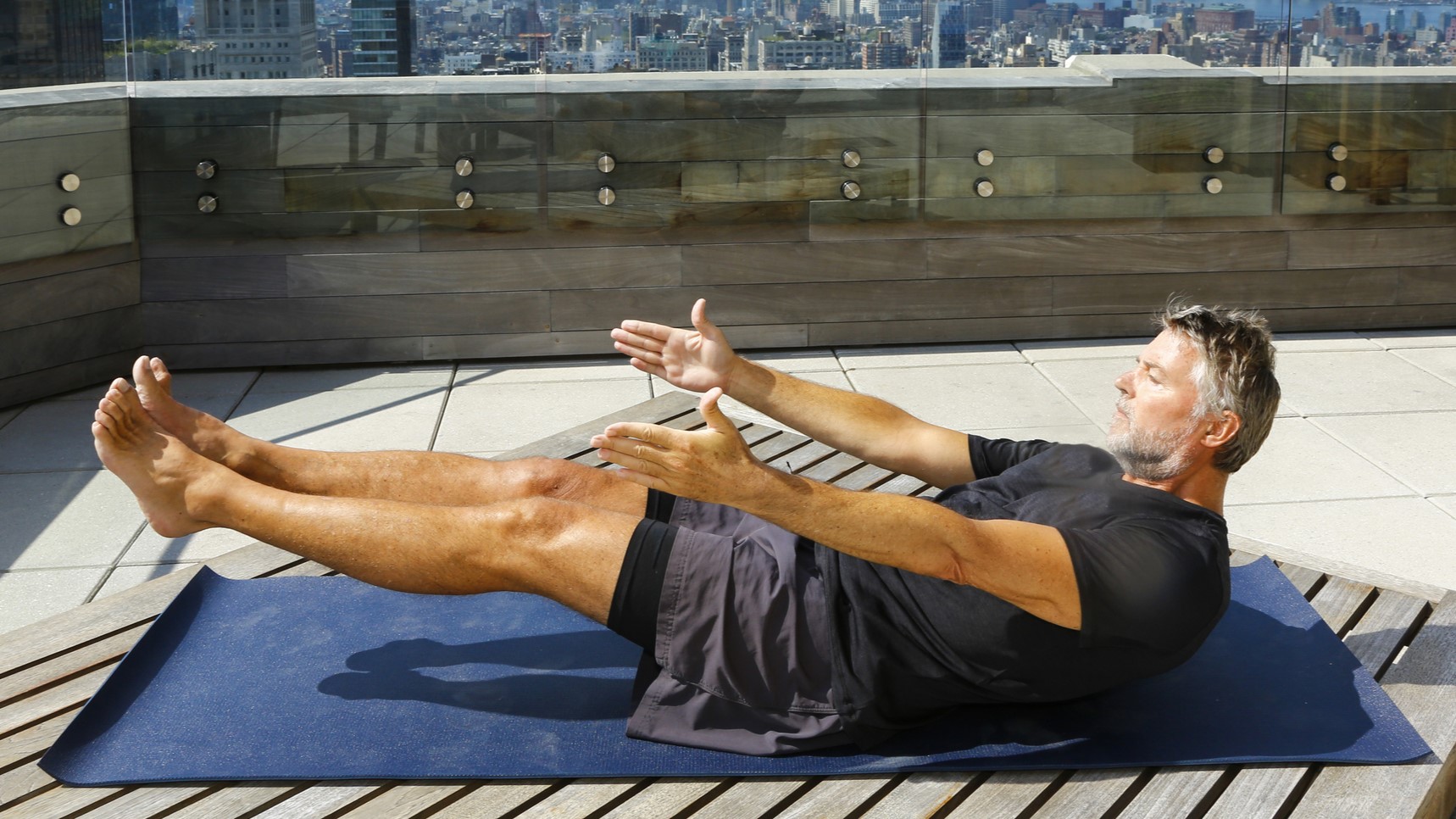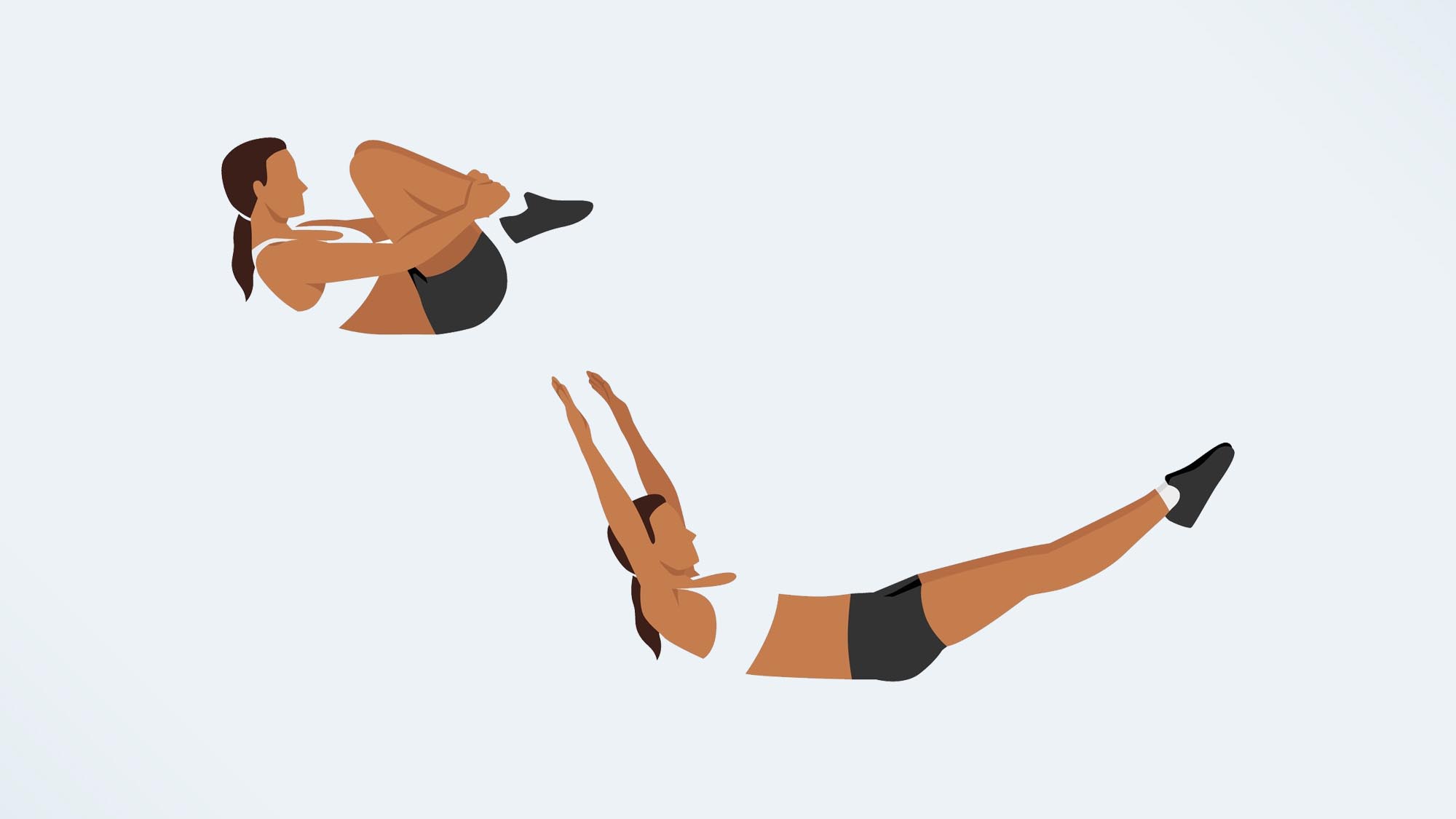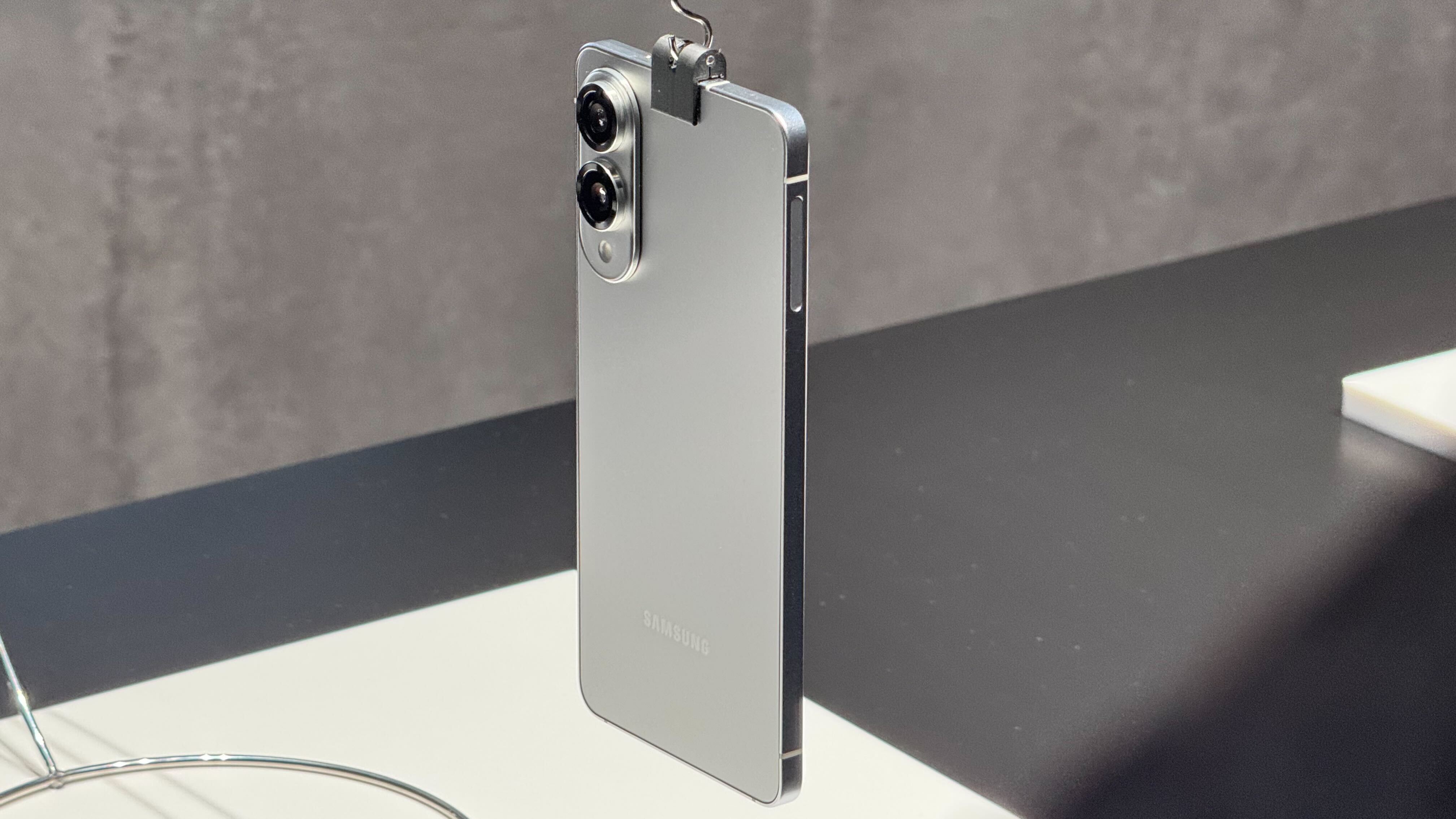I did the double leg stretch for a week — here's what happened to my abs
This tough move works your core but leaves your lower back in peace

One of the reasons core-strengthening exercises such as the plank have become more popular in recent years is that traditional core moves such as sit-ups and crunches can result in lower back pain if done incorrectly — and they are often done incorrectly. When the core is not strong enough to begin with, people tend to overcompensate by using their lower back muscles and a jerking motion to do sit-up or crunch. The plank, which is a static exercise, removes that risk.
The double leg stretch also takes the pressure off your lower back (if done properly, of course), and it calls for plenty of movement, which, for me, puts it ahead of the plank. Admit it, the plank is pretty boring. It even sounds boring. Plank. See?
What is it?
The double leg stretch will be familiar to anyone who has done Pilates, which meant I’d never heard of it. It’s a dynamic move that works your upper and lower core muscles, while limiting the stress places on your lower back. It’s a challenging, fatiguing move, especially as the reps mount up, but it works. That I can assure you.
How to do the double leg stretch

- Begin by lying on your back, legs in table-top position, and your hands resting on the top of your shins. Your lower back should be pressed into the mat.
- Curl up to raise your shoulders, neck and head off the floor.
- As you inhale, stretch your arms straight out behind your head and stretch your legs away from you. Your arms and legs should be at an angle of 45 degrees to the floor (if you can’t manage that, don’t worry – you’ll get there). Hold this position for a second or two.
- Exhale and draw your knees back towards your chest, until your legs are again in table- top, while sweeping your arms around back to the tops of your shins. If possible, raise your shoulders a little more off the ground. That’s one rep.
- Aim for three sets of 10 to begin with.
I did the double-leg stretch for a week. Here’s what happened
Day 1
How to put this without going over the top? Ah, I know: Hard, hard, hard. The first 10 were fine, smooth, and manageable, but after the final set of 10, I was breathing like someone taking on their first Empire State Runup. This didn’t mean I’m appallingly unfit, just that I was not remembering to breathe properly during the move.
As I have noted before, it’s easy to become caught up in the exercise, reaching for the brass ring while neglecting the crucial action of taking in oxygen. A couple of other things to note from day one: Remember to stretch your legs out fully and keep them raised. I felt this one mostly in the lower abs, but I felt it deeply. I noticed no pressure on my lower back or neck, which is a big plus when it comes to core moves.
Day 2
My core was still sore from the day one. I considered this a positive. I did the same number as I had on day one — three sets of 10 — but I felt there was a little more fluidity. Nothing to write home about, so I wrote about it here instead. This time, I felt it from the top of my ribs all the way to the bottom of my core. This one doesn’t work the obliques, of course, but there are plenty of other moves out there that will, including the venerable Russian twist.
One guide for this move suggests holding the stretched-out position for three seconds. If you can do this for three sets, feel free to show your core to the world. You’re ready. I held for one, maybe two, and that was more than enough. Much more.
Sign up to get the BEST of Tom's Guide direct to your inbox.
Get instant access to breaking news, the hottest reviews, great deals and helpful tips.
Day 3
I managed three sets of 12. Not much of an improvement, you might think, and you’d be right, but I was delighted. Don’t forget to keep your shoulders raised throughout the move. You may be tempted to lie flat as you stretch your arms behind you, thinking that throwing in a little crunch or sit-up on the way back up feels right for the move. But it’s not the kind of exercise. By drawing in your core to keep your shoulders raised, you will be doing plenty of work.
Day 4
The following day I pushed for three sets of 15. I was beginning to find it easier, which was a pleasant surprise. My body was responding positively to the move, rather than going on strike and demanding more food, which it sometimes does. As I increased the reps, my confidence grew, which makes any exercise a far more enjoyable undertaking.
Day 5
I pushed the reps again and completed two sets of 15 and one of 20. As you tire — and you will — you may want to give your core a break by not just touching your shins with your hands, but holding them. This is known in the game as cheating. Don’t do it (though the desire will be strong, as I was learning). After finishing the move, I returned to working at my desk and found I was sitting straighter and taller.
Day 6
Three sets of 20. Frankly, I was amazed to have doubled my reps in less than a week. I’m fairly sensible when it comes to trying a new exercise, so perhaps I was being conservative at the beginning, testing myself without risking a hernia. At the same time, this move, like the others I have done, is as much about form as it is about strength and endurance. Once I could do the move smoothly, it became much easier. One more tip: Watch your for knees drifting away from each other. Aim to maintain as straight a line as you can.
Day 7
On the final day, I didn’t push it any further: three sets of 20, though I tried to hold for slightly longer at full stretch. Even if you keep it to sets of 10, you can increase the challenge by pausing for longer. You might find your core beginning to shudder a little, but the rivets are not about to start popping out — you are not a submarine that’s gone too deep. I won’t be taking up Pilates any time soon, or even after that, but this is one move I will be happy to continue. Give it a go and I think you’ll feel the same.
More from Tom's Guide
John is a writer and editor based in London. He was worked for magazines such as Runner’s World, Men’s Health, Women’s Health and Cosmopolitan. A keen runner, what he lacks in ability he makes up for with enthusiasm and excuses.

